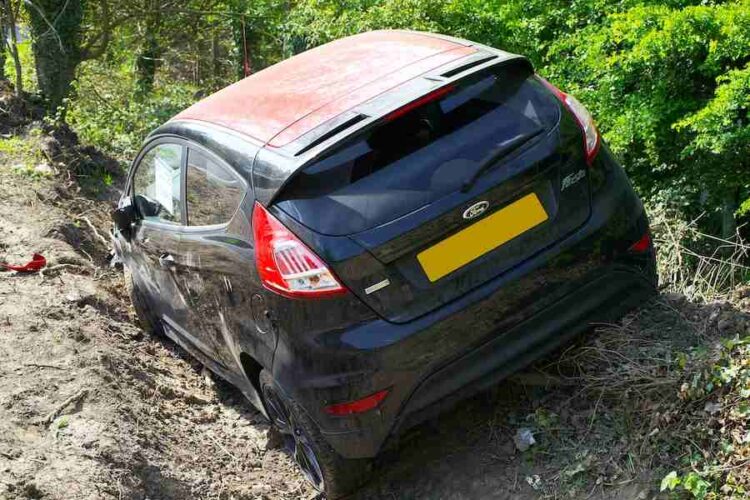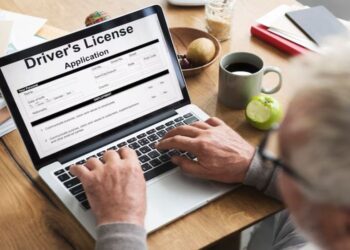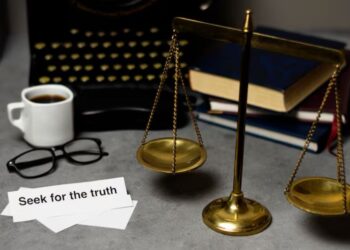When a car accident happens, it’s important to take the next steps quickly. In some cases, the other driver might try to blame you for the accident and claim that they weren’t at fault. If this happens to you, dispute their claim and stand your ground. Dispute their claim of not being at fault by providing evidence that proves it wasn’t really your fault. Whether you’re the one who was rear-ended or the one who rear-ended someone else, knowing how to dispute a car accident fault is an essential part of recovering from that crash and moving on with your life. Keep reading to learn more about how to dispute a car accident fault so you can get through this process as quickly and easily as possible.
How To Dispute A Car Accident Fault?
1. The Duty To Cooperate
The first step to disputing your fault in a car accident is to cooperate with your insurance company and the other driver. This means all parties should stay calm and exchange information, give a full description of the accident, and take photos of the collision. In addition, you should let the other driver know you’re willing to exchange phone numbers and issue a formal apology if you feel responsible for the accident. After all, the more you can do to prove your innocence, the better. If you’re dealing with an insurance company, you might have to sign a “duty to cooperate” form as a condition of receiving benefits.
2. No Evidence Of Negligence
If you’re not at fault in the accident, but someone claims you are, you may be able to dispute fault. However, if the other driver is at fault and you want to dispute their negligence, you’ll need to prove that the accident didn’t happen the way they say it did. Let’s say you’re in a car accident. The other driver says you were at fault, but you know you were driving safely and followed all the rules of the road. After the accident, you may be tempted to blame the other driver and try to prove they were at fault. However, if you want to dispute fault, you should take a more passive approach and prove that you were not at fault.
3. Contributing Cause
Contributing cause is a bit different from negligence. This is an instance where both parties are at fault for an accident, but the other party is more at fault. When you dispute fault based on contributing cause, you’re saying that both parties were at fault, but you were less at fault than the other party. Let’s say you’re in a car accident but you know the other party is more at fault. In this case, you can dispute your fault by contributing cause, which means you admit you were at fault, but less so than the other party.
4. Rescission
Rescission is a rare instance where you can dispute your fault even if you’re clearly at fault. You may be able to dispute fault based on rescission if the other party is not at fault because they have misrepresented information or provided false information to your insurance company. For example, let’s say you have car insurance and the other driver is at fault for the accident. However, you know the other driver is lying about their identity. You could dispute fault based on rescission by proving that the other party is lying about their identity.
5. Collision Based On Misrepresentation Or Fraud
Misrepresentation or fraud is very similar to rescission. If you believe the other party lied or provided false information during the accident, you could dispute fault based on misrepresentation or fraud. The tricky part of this type of dispute is proving that the other party did something wrong. It’s important to note that if you dispute fault based on misrepresentation or fraud, you’ll be responsible for the full cost of the accident.
Why Is Disputing A Car Accident Fault Important?
- The reason that it’s so important to dispute a car accident fault is that you want to protect yourself legally and financially. If you do not dispute the other driver’s claim of not being at fault, they are legally able to keep all of the damages that they received from your car accident. In addition, if you don’t dispute the other driver’s claim, they will be able to take legal action against you for any injuries that they received during the crash. If the other driver does not have to pay for their own injuries, you will be responsible for paying for the damages that they received.
- If you are at fault for the accident, you will likely be responsible for paying for all the damages, injuries, and other expenses caused by the accident. If you don’t dispute the other driver’s claim of not being at fault, you will be responsible for paying for all of this yourself. If you dispute the other driver’s claim, the insurance company will investigate the accident and determine who was at fault.
- If you are at fault for the accident, you will likely be responsible for paying for damages, injuries, and other expenses. If you dispute the other driver’s claim, you will have an opportunity to explain what happened. You can provide evidence that proves you weren’t really at fault. If you dispute fault and have evidence to back up your claims, you’ll have an easier time recovering from the accident and collecting any money you’re entitled to.
When Should You Dispute Fault After An Accident?
- You should dispute fault after a car accident if you believe you weren’t at fault. Before you start disputing who was at fault, it’s important to make sure you have some evidence to back up your claims.
- As soon as possible after the accident, write down what happened, who was involved, and any other details that might be important. Include information like the other driver’s name, the name of their insurance company, the names of any passengers in the other car, and your name, address, and contact information.
- The sooner you dispute the other driver’s claim, the better. You don’t want to wait until the other driver’s insurance company contacts you about the accident.
What Is A Car Acc.-Fault Claim?
- A car accident-fault claim is when a driver at fault for an accident submits a claim for damages to their own insurance company. In many cases, the driver who caused the accident will try to make a car accident-fault claim.
- That way, they won’t be responsible for paying any damages or injuries caused by the accident. It’s important to understand that a car accident-fault claim isn’t a legal claim.
- It’s the driver’s attempt to get their own insurance company to pay the accident-related expenses. In most cases, the insurance company will deny the car accident-fault claim.
- They will then attempt to get the other driver’s insurance company to pay for the accident-related expenses.
When Should You Dispruable A Car Accident?
- You should disable a car accident if you were at fault for the accident but don’t have the money to pay for the damages, injuries, and other expenses caused by the accident.
- If you don’t have the money to pay for these expenses, you should also consider applying for car insurance coverage as soon as possible.
- If you have car insurance, chances are you will have better luck with the other driver’s insurance company if you have coverage. They’re more likely to accept your claim if you have insurance and you’re paying for the damages out of pocket.
- While it’s important to dispute the other driver’s claims if you believe they’re at fault, it’s also important to protect yourself and your finances from the accident.
- If you don’t know how to dispute a car accident fault or are struggling to find evidence to support your claims, you can reach out to an attorney for assistance.
Conclusion
Fault in a car accident is a very important part of the car accident process. If you are found to be at fault for the accident, you will be liable for covering the damages sustained by the other driver. If the other driver is found to be at fault for the accident, you will be able to recover any costs you’ve had to pay because of the accident. In any car accident, it’s important to dispute the claim of fault if you believe that it’s incorrect. You can dispute the claim by getting a statement from a witness, gathering evidence that supports your claim, or getting a police report that says your version of events.










